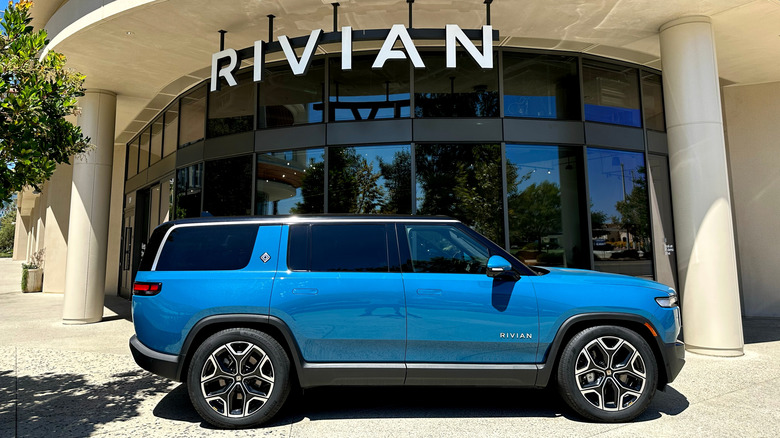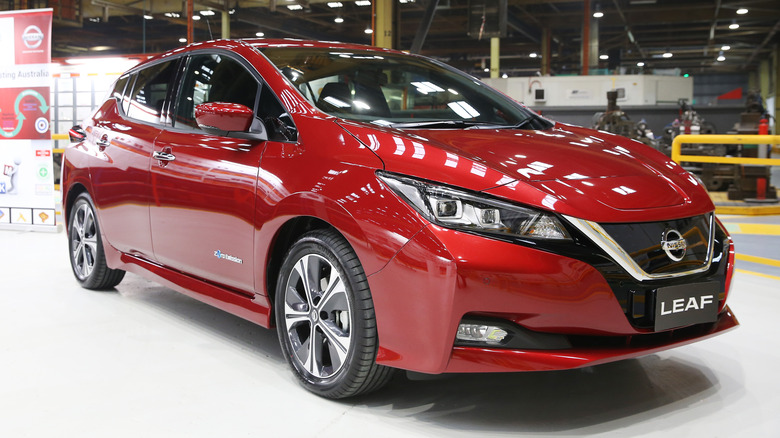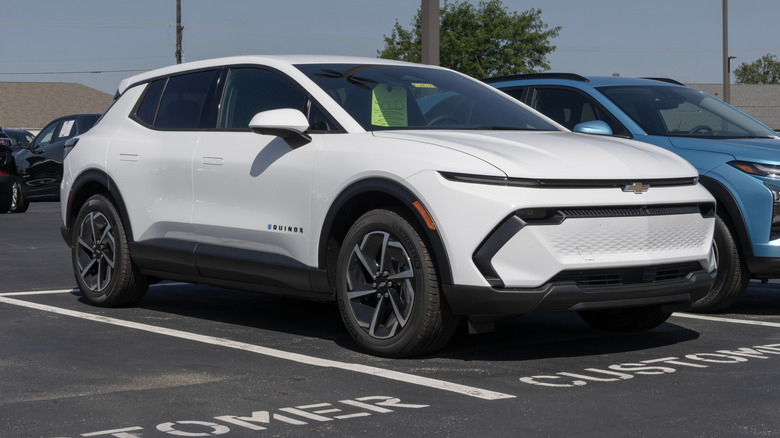The Cheapest Electric Vehicle On The Market Shows Why EV Adoption Rate Isn't Higher
Electric vehicles, as their name implies, are cars that run on electric power. Often shortened to EV, they have a lot of benefits that can make them attractive to consumers. They have low emissions, and they offer lower fuel costs since you don't have to go to the gas station once a week. You can simply charge the batteries at your home or at an EV station. They are overall better for the environment and offer similar driving experiences to their gas-powered counterparts. Their technology is constantly improving, with the possibility of electric cars with a 3,000-mile range in the near future. So why aren't they more popular?
A version of EVs have actually been around for centuries, though not as we know them today. Drawbacks to their development were driven by their limited range per charge and a lack of solid infrastructure for charging them. With better technological innovations and a rising understanding of the environmental impact of gas vehicles, EVs entered their modern age in the late 1990s.
One of the biggest issues that has slowed down EV adoption is that even the cheapest electric vehicle still costs more than similar gas-powered models. The repair costs for EVs can also be more due to the complex nature of EV technology and the lower availability of repair parts.
Electric vehicles still cost more than gas-powered models
Nissan is a Japanese automobile maker that has been around since 1933. It offers a wide range of cars at a low to mid price range, excluding its GT-R sports car. The 2025 Nissan Versa is powered by gas, whereas its 2025 Nissan Leaf is an EV. Both have five seats and front-wheel drive. The gas-powered Nissan Versa has an MSRP of $18,330–$22,330, while the Nissan Leaf EV has an MSRP of $29,280–$37,330.
The Hyundai Motor Company originated in Korea and is known for a wide range of low to mid-priced cars as well as commercial vehicles. The 2025 Hyundai Elantra N is gas-powered, and the 2025 Hyundai Kona Electric is an EV. Both have five seats and are front-wheel drive. The gas-powered Hyundai Elantra N has an MSRP of $35,595–$37,095, while the Hyundai Kona Electric has an MSRP of $34,470–$42,645.
Chevrolet is an American car company. They are famous for their Corvettes and Camaros, but they do offer less sporty mid-priced cars. The gas-powered 2025 Chevrolet Malibu and the 2025 Chevrolet Equinox EV both have five seats and front-wheel drive. The gas-powered Chevrolet Malibu has an MSRP of $26,995–$32,695, while the Chevrolet Equinox EV has an MSRP of $34,995–$44,795.
The repair costs of electric vehicles
Electric vehicles are not automatically more expensive to repair in the event of a crash. It depends on the specific car, what was damaged, and to what extent. Overall, however, there are factors that contribute to EV repair potentially costing more.
Electric vehicles are fairly new, so replacement parts usually come directly from the original manufacturer rather than third-party suppliers. Their advanced technology often needs to be fully replaced rather than simply repaired. EVs themselves are typically marketed as luxury vehicles and thus targeted to those who can afford nicer cars. That factor drives their overall repair costs higher.
Another big repair cost factor is that many EV manufacturers are young. For example, a fender-bender with an electric Rivian R1T had a staggering $42,000 repair bill. The senior vice president of the Highway Loss Data Institute, Matt Moore, clarified that Rivian being a young company is what contributed to this cost. He told Cars.com, "It's electric. It has these unique design characteristics. They are a startup. They're a low-volume manufacturer ... If you look at any startup — gas-powered or electric — startup manufacturers always have higher [costs] than others because there's not a repair network in place. There are no aftermarket parts. No one has experience fixing those vehicles."


